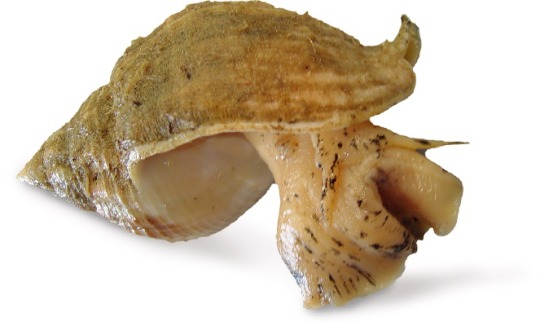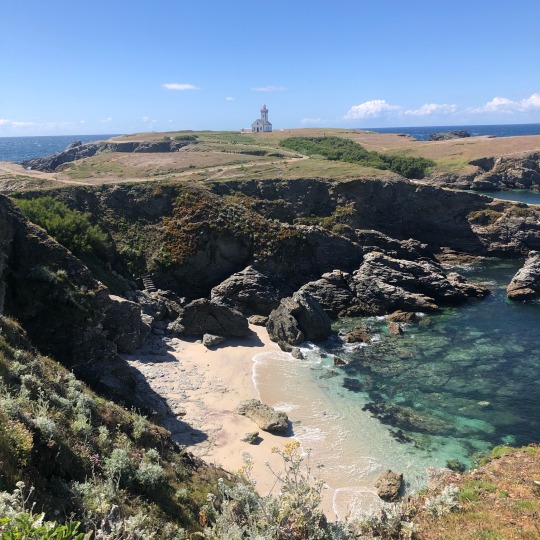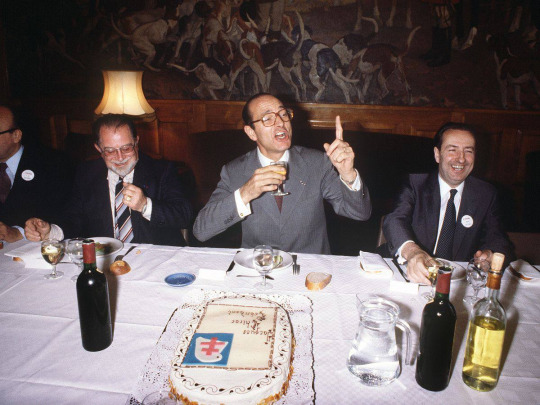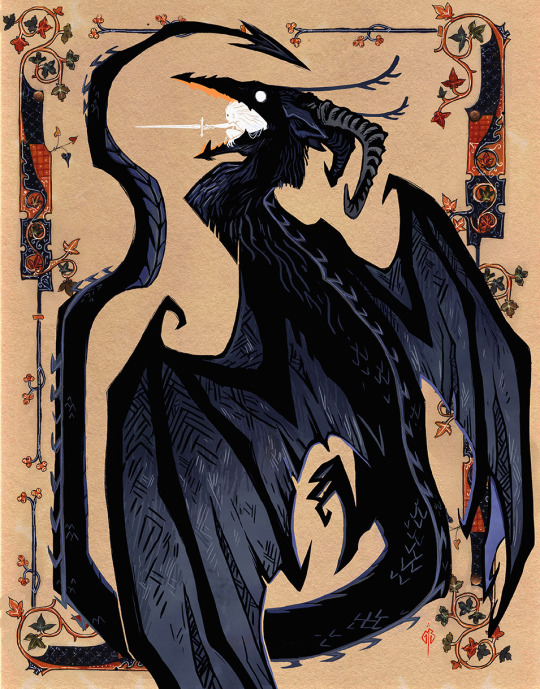#bulot
Text
saint Thomas d'Aquin
#voyage #ocean #life #lifestyle #news #music #playlist #youtube #bulot #Joconde #musée #escrologie #Villefranche #Paris #France
Code couleur : gris, noir et blancCafé : pas avant le début d’après-midi en raison d’une grasse matinée excessivement longue.Nettoyage de mon bloc-notes numérique, lecture, préparation de nouveaux articles, bilan des acquisitions du mois, accrochage de quelques-unes d’entre elles, procrastination et un constat…Bien que cela ne constitue pas une liste très longue, l’après-midi s’est trouvé occupé…

View On WordPress
#Art#Autisme#Bulot#Ecologie#Funambulistière#Gauchiasse#Joconde#Le mot du jour#Les belles choses de la vie#Life#Lifestyle#Louvre#Militants#Musee#Music#News#Océan#Paris#Playlist#Procrastination#Saint Thomas d&039;Aquin#Villefranche-sur-Saône#Voyage#Youtube
0 notes
Photo

En flânant sur la plage... #plage #sable #galet #bulot #galet (à Jard-Sur-Mer, Pays De La Loire, France) https://www.instagram.com/p/ChLIYDxDJeKVPU3q831tqgrTTIwgZG4fX3Dy9c0/?igshid=NGJjMDIxMWI=
0 notes
Photo

Dragon by Marion Bulot
7K notes
·
View notes
Text
oc bulot phap daohaisan
Ốc bulot pháp thường được đem đi luộc, sau đó được dùng kèm với các loại sốt như mayonnaise hoặc nước sốt vinaigrette. Chúng có vỏ cứng và phải được bóc lớp vỏ bên ngoài để lấy phần thịt bên trong, tương tự như việc ăn ốc bươu hoặc ốc móng tay. Thịt của ốc bulot pháp có màu trắng, độ đàn hồi cao, có hương vị đặc trưng của hải sản và thường được đánh giá là có hương vị đậm đà, đặc biệt hấp dẫn với người thưởng thức ẩm thực biển.
0 notes
Text

Emmanuelle tient le bulot dans sa main et le présente avec grâce.
17 notes
·
View notes
Text
je peux rien y faire maintenant (et ça n’a jamais été sous mon contrôle de toute façon) mais j’aurais trop aimé d’avoir de bruycker comme exposition au lieu de camille de taeye cet été… camille de taeye… c’était du bulot mais je trouvais des choses à dire, des analyses littéraire ses techniques son histoire etc etc, mais mon dieu que son art est moche… si on le compare à de bruycker… il est belge, et jsuis sûr qu’on peut trouver des refs littéraires. et accessoirement son œuvre me donne pas envie de m’arracher les yeux, y a que des positifs pq on n’a pas fait ça ???
#personal#french posting#why bc the board weren’t close personal friends with de bruycker and/or his widow
2 notes
·
View notes
Text
kickstarter
Off we go!!! On the Way to Chrysopoeia has launched on Kickstarter. Please support it if it caught your eye in the past few days!
It’s a letter-writing game for two players, written by Morgane Reynier and illustrated by Marion Bulot. Together with a partner you will be writing a four-handed adventure, first by inventing its two protagonists and then by leading them on a legendary journey. It’s a different way to make up a story in your head: you’ll be reinventing objects and places you see every day, turning them into crucial ingredients for a Great Work of alchemy.

On the Way to Chrysopoeia is a long-form, intimate experience for anyone who loves letter-writing as well as drawing, taking pictures or even cross-stitching, because it has a strong focus on attaching keepsakes to each letter. It invites you to take your time and bring magic to everyday life.
Check it out on Kickstarter and make me a happy translator <3
#indie ttrpg#ttrpg design#zinequest#zinemonth#epistolary#letter-writing#alchemy#chrysopoeia#now to stare anxiously at the campaign page for one month straight
19 notes
·
View notes
Text
Adèle et moi.

Je ne chante ni bien ni mal et c’est là tout mon drame. Pas assez bien pour qu’on s’extasie, pas assez mal pour qu’on en rit. Le genre de moyenne supportable sur 2min30 mais qui donne envie de me fourrer du sopalin dans la bouche au bout d’une heure. Et là réside une partie du problème. J’ai de l’endurance. En témoignent mes partenaires de karaoké. Accrochée à son micro tel un bulot à son rocher une femme réussit l’exploit de chanter une semaine d’affilée sans boire ni manger. Mes amis sont trop aimables pour m’interrompre, je doute qu’il faille les en remercier. Ils supportent, sourient, serrent les dents sans aucun doute, se risquent même parfois à taper dans leurs mains ou à chanter avec moi ce qui, je vous met en garde dès à présent, a toutes les chances de me relancer avec plus d’ardeur encore. Je donne dans le vibrato de fond de gorge légèrement nasillard, toujours en rythme avec ce qu’il faut de justesse pour penser moi-même que j’envoie du lourd sur Adèle (prenez la mesure de l’ego). Sans parler de mon faciès. Sourcils froncés et petite moue de tête à claques, parfois même quand c’est trop bon je ferme les yeux. S’ajoute à ça une maîtrise inégalée du yaourt franco-français qui a tué une seconde fois ma tendre Dalida dans la tombe. Aux oreilles des autres c’est une torture lente. Vous connaissez le supplice de la goutte d’eau ? Au commencement on se dit que c’est inoffensif, à l’usure on massacrerait sa propre mère pour que ça s’arrête. La goutte d’eau c’est moi. Envoyez-moi à Guantanamo, je serais votre meilleure arme, tortionnaires.
Maintenant que je me suis confessée et mes vacances approchant voici un avertissement : Ne sortez jamais vos guitares en ma présence messieurs. Je me jetterais avec allégresse sur l’occasion pour massacrer vos interprétations.
Je suis à la chanson ce que le taboulé industriel est à la gastronomie française. À petite dose ça passe encore mais un peu trop et c’est l’étouffement garanti. Vous êtes prévenus.
3 notes
·
View notes
Text


Parmi mes mets de la mer préférés : combo bulots / mayonnaise maison et aile de raie au restaurant de l'Hôtel de Bretagne à Dol-de-Bretagne, septembre 2023.
2 notes
·
View notes
Text


Coucou tumblr. Je profite d’attendre mon prochain vol pour t’écrire. Ça fait un moment que je ne l’ai pas fait mais, sérieusement, je n’avais pas le temps ni l’envie. Cette nouvelle vie est mouvementée. Je me sens bien dans mon appart, les cours sont intéressants mais ça fait pas tout… je suis dans une petite ville avec principalement des catho tradi avec qui je ne partage pas du tous les meme valeurs. C’est difficile de créer des liens. Je m’accroche à ce qui me plaît, je suis là pour avancer. Ces vacances vont me permettre d’un peu souffler, chose que je n’ai pas fait depuis la rentrée avec la quantité de bulot que j’ai h24. Je vais rejoindre M chez lui. J’ai oublié de te raconter mais il est aussi venu me voir, c’était sympa mais il a plu. J’ose espérer que le temps a Nice soit meilleur, j’ai hâte de voir où il est, enfin. C’est étrange tout de même, on avait l’habitude de se voir chez nous, à la Réunion. Je te tiendrai peut-être au courant de mon séjour, à bientôt.
14 notes
·
View notes
Text
Poor information.. the truth in damascus
Last year I was sent a link to an article on Damascus by the author I believe the intent was some cross promotion, normally I am all about that.. how ever the Article was SO full or miss truths miss understanding and just plan wrong information I could not link my self with it. so I went through (at the authors request) and corrected the content.. I just check the original post , a few of my corrections were used but most were totally ignored.. so I decided to post the original and my corrections here, maybe someone can use that information.
What is Damascus steel? The term has several meanings, but for cookware, modern Damascus steel is a type of layered material that’s simultaneously sharp, hard, and flexible. These are all valuable traits in kitchenware, especially when frequent high-speed work can dull knives and make them hard or even unsafe to use.there is no performance difference in modern damascus, performance is dedicated by heat treat and steel selection, damascus is pretty and a show of skill for the maker.
I’ve evaluated many knives in the kitchen, but I’ve seen a lot of misunderstanding and misinformation about Damascus steel. Today, I’d like to correct some misunderstandings and talk about things like its history, what to look for, and what modern Damascus steel is all about.
Damascus Steel History
The metal we use today, modern Damascus steel, isn’t the same thing as the original metal that the name comes from. THis is incorrect, the name damascus has been used to describe steel with intentional patterning for centuries , 18c damascus gun barrels as an example are pattern welded.
���Real” Damascus uses Wootz steel, a type of alloy made from iron and wood chips that added carbon. The alloy usually had about 1% carbon, though it could go higher, making it very high-carbon even by modern standards.Wootz is a Made up word a poor translation/transliteration of a north Indian word meaning steel, in the modern knife community is refers to several types of steels that are hypereutectoid and show a watered pattern, it was never truly lost as Bulot is still being made in the old way in georgia and portions of russia, the west lost it and largely never really understood what it was.
We roughly know the process for making Wootz steel today, but the original technique is lost and hasn’t been replicated fully since. Many scholars believe that genuine Damascus steel has certain impurities from the original iron ore that provide a specific balance to create better blades. There are several period descriptions of the process and it was made differently in different areas. There are a number of modernsmiths that are recreating the watered steel patterns. Wootz does not make a better blade than modern steels, it was a better material in that period when the alternative was bloomerly steels but those have not been used for over 100 years.
The old types of Damascus steel have some of the same characteristics of modern-day blades, including sections that are sharp and brittle or softer and durable. Layering these sections together results in blades with all of the good properties and minimized negative properties, making them fundamentally superior to regular steel, much less iron or bronze. This is all wrong, the advantage of wootz over other period materials was that it is homogenous with small carbides that add in cutting ability.
The name itself likely comes from how Damascus blades and other equipment were made and sold in Damascus, currently located in Syria. The ore itself came in ingots from India, though. The name is lost in time this is one theory an other is it is an extension of the word Damascene a process of surface decoration common in the mediterranean, Some people prefer referring to it as Wootz steel to distinguish it from other metal items made and sold in Damascus. Many people also object to calling modern steel Damascus because it has different properties than the original blades, even if the surface pattern is similar. This is an argument that has no point , words mean what we think they mean in the knife world damascus means pattern welded steel, they are many subsets of this , IE canister damascus mosaic damascus multi bar etc. just as wootz has a specific meaning in the industry , academics refer to these materials differently and dislike the term wootz as it is a corruption of an Indian word that just means steel.. Preferring the more accurate local terms.
Damascus is also known in many languages as “water steel,” thanks to the ripple-like patterns on the blades.
How Is Damascus Steel Made?
Today, Damascus steel is made with several processes.The worst process is etching, which creates a ripple-like pattern on kitchenware. This is a cosmetic technique that doesn’t improve the actual knife, so I don’t think it’s worth looking at. However, it can be hard to tell if a blade is just etched or has solid ripples throughout, so amateurs often get fooled into thinking etched steel is real Damascus. All damascus is etched, it is revealing the difference in alloy of the steels used, if a resist is used it is not damascus.
The cast Damascus process, a common technique, involves mixing iron and steel with charcoal under an oxygen-reducing environment. This believed to be as close to the original process as possible. (steel is an alloy of iron and carbon. Wootz is made through controlling the trace elements and carbon content of the melt) The steel is then folded together in layers–creating the signature wavy patterns and increased strength. wootz is never folded to make pattern the pattern is from chains of carbides that form in the steel also called alloy or carbon banding.
The other modern technique is known as pattern-welding. This also uses high-quality steel and iron, but instead of mixing the ores in a sealed environment, they’re hammered together at high temperatures to weld the metals together throughout the body. (Ores are never used in any for of wootz or pattern welding that is smelting and is a different process, rarely wootz is made by direct reduction from ore, but this is not efficient)
Pattern welding gives the appearance of Damascus, but the primary quality of Damascus comes more from the metals than the forging process. Bad metal still produces bad blades, no matter how fancy you make it look. Some companies take things a step further by trying to create advanced alloys for casting or pattern welding. Creating these usually involves testing different ratios of impurities, which in this context means anything besides iron and carbon atoms. We often say that impurities are undesirable, but in metallurgy, they can add valuable characteristics. This is a misconception of the metalurgy involved. Metals used as alloy in steel and numerous all modern steels contain alloy other than carbon and iron.
One of the most popular elements to add is vanadium. This atom is ductile and malleable in significant amounts, meaning it’s easy to shape and doesn’t break too easily. It also exhibits excellent corrosion resistance by itself. Vanadium is used because it is a strong carbide former and works to pin grain size, it makes steel finer grained to hold and keener edge. Nickel chrome are added for toughness manganese for depth of hardening .
When present in the forging process, vanadium helps encourage the formation of bands of cementite in steel. Cementite is a molecule with three iron atoms and one carbon atom, and its presence is one of the primary components of the original types of Damascus steel. Creating the correct ratio of cementite in Damascus requires heating and cooling to specific ranges.(this is a misconception of what vanadium is doing, all steel forms cementite (Iron carbide) for a knife we don't want cementite we want martinsite Vandium forms vanadium carbide.
Molybdenum is a frequent modern alternative. This atom tends to add hardness, toughness, and resistance to corrosion when it’s present at 1% or below. Molybdenum adds toughness I don't believe it will change corrosion resistance much, Nickel and chrome are generally added for that, not many knife steels use Moly as it increased ductility not a advantage in a knife
Chromium is another impurity but is present in much greater quantities. Steel that’s 13% Chromium or more becomes stainless steel, which exhibits outstanding corrosion resistance and serves as the heart of many modern tools. Modern metallurgists often include several different impurities when making a steel alloy, then pattern-weld various alloys to create a Damascus-like blade. A key attribute for understanding the quality of Damascus steel is the Rockwell Scale. This is a widely-used rating for kitchen knives and other materials that indicates their overall toughness. Note that higher is not inherently better. Some people prefer the feel of softer blades, so you shouldn’t buy something based exclusively on this rating. Regular knives tend to fall in the 54-56 range on this scale. Premium kitchen knives can go as high as 66, which is noticeably tougher. Carbon steel can go up to 68, but most people don’t want to go that high because metal above 64 on this scale is probably brittle and prone to cracking. Hardness is not the same thing as toughness in a knife.65-67 is the max on most low alloy carbon steels , harder = a reduction in toughness but an increase in edge holding , it also changes the nature of the failure from being likely to bend to breaking (rolled edge vs chipped)
Genuine Damascus steel from the past is usually 62-64 on the Rockwell scale, which is excellent performance. Modern versions of this steel are probably 58-60, which is still appropriate for most kitchen needs. Anything below 52 on the Rockwell scale is too soft for a kitchen knife, so you probably won’t even see those on shelves. wootz i have seen hardness testing on was mid 40 mid 50 HRC old french knives are high 40s most modern makers hover around 60HRC
Modern Damascus Steel
Modern Damascus steel uses either the casting or pattern welding processes. Both of these produce viable blades for the kitchen, and they’re primarily the result of ongoing attempts to replicate the original high-quality blades.Etching is decorative and not true Damascus Steel. It’s just made to “look” nice.It’s worth noting here that Damascus steel isn’t necessarily the best option these days. The blades were exceptional for their time, but some modern options and alloys outperform Damascus. That doesn’t make Damascus a poor choice in the kitchen, but I want to dispel the mystique that it’s always going to be the best choice. That’s not true.Layering has a significant effect on modern Damascus steel. In most cases, having more layers is better, though it’s possible to go overboard and get so many layers that they’re functionally indistinguishable from each other. (layering only mattered when it was bloomerly based steel, now only what alloys are present matterns)
This type of Damascus steel mixes ingots of different characteristics to get a pattern weld, then folds it over to spread the characteristics throughout the knife better. A blade with several hundred layers is usually good enough for modern cooking. That said, steel with more layers often ends up a little thicker. Some people prefer fewer layers because that allows a knife to stay thinner and more flexible in the kitchen. Neither is the best choice for every chef, so the only way to decide between a thin blade and a thicker one is to test them out with your recipes.there is absolutely no truth to any of this. Higher layers= finer pattern lower layers=coarser pattern..
Advantages Of Damascus Steel
The Damascus steel process has several advantages in modern kitchens. For clarity, most of these are well into the “optional” category for cookware rather than anything you absolutely need. Damascus steel, both original and modern recreations, has a distinctive wave or ripple pattern. Most people claim, and I agree, that this makes a knife look better and more interesting than having a single solid color along the entire length of the blade. Aesthetics matter in professional cooking, but they can also influence you at home. We like things that are fresh and new, but we dislike things that seem old or worn out. Top chefs don’t want to work in a cramped, dirty kitchen with a set of half-broken tools unless they have to. Damascus steel also tends to look nice when the knives are hung up or attached to a magnetic board rather than hidden in a cutting block. Here, I’d like to point out the distinction between laser-etching and true modern Damascus. Many knives sold as Damascus these days are purely aesthetic, with a surface-level treatment that creates a wave blade pattern. They’re functionally no different than a regular knife, so aesthetics is the only thing setting them apart. Almost any sort of knife can have a pattern like this, including high-quality carbon steel. Modern Damascus knives maintain this aesthetic but have genuine layers that give the knife different characteristics. This is harder to find but worth pursuing if you want anything besides a nice look for your knife.
Quality Damascus blades tend to have high corrosion resistance. Since the blade itself has layers, any corrosion has to work through different materials instead of penetrating through one material. any non stainless damascus is just as prone to rust as any carbon steel.
This is the other area where Damascus truly stands out because carbon steel, the main competitor, is a little vulnerable to rust. Carbon steel typically lacks a chromium content, which is the material that makes other types of steel resist rust. Kitchens can be quite wet, so there are some areas where carbon steel rusts out too quickly to be helpful. common pairings for damascus are 15n20 and 1084 or L6 O1 in both cases this is due to the Nickel and manganese continents of the two steels, chrome steels are rarely used as they do not play well with others being difficult to forge weld and being prone to cracking and warping in hardening .
Some Damascus steel knives have a single hard center that gets sharpened, then patterns weld around the outside. These effectively sheathe the true knife and provide corrosion resistance, although their properties don’t continue into the blade.this is a japanese technique called SanMai (three layers) or GoMai (5 layers) not technically damascus
Damascus blades tend to stay sharp for a long time. They certainly outperform regular steel, especially when the pattern welding extends down to the blade itself. This isn’t a minor consideration because sharpness is a significant factor in the kitchen. Sharp blades cut faster and easier than dull ones. That puts less stress on the chef and makes it possible to make more meals in less time. Home cooks don’t need to worry about this quite as much, but it’s still a good idea to sharpen your knives at least once a year.
What To Look For In Damascus Steel Knives
The primary things to look for if you want to buy Damascus steel knives are the metal content and the forging process. Remember, many knives sold as “Damascus” these days only have an etched surface. They’re just regular knives modified to look better and give you the impression that they’re somehow harder, sharper, or more durable than they are. There is a flood of junk knives on the market sold as damascus , many are made in the warzabad region of pakistan these are made from poor quality steel and generally of very low hardness, superficial etched knives are much rarer but are out there.
Avoid knives like those unless you’re buying them as decorations, in which case they’re a cheap way to get an attractive blade. Pattern welding is generally better than casting, so knives made with this process usually turn out better. Make sure to check the overall structure of the knife, too. If the pattern stops before the cutting edge, the Damascus qualities are primarily decorative but offer some corrosion resistance. Almost no knives are made by casting. drop forging is common as is stamping .
If the pattern goes through the blade and it’s not merely etched onto the surface, you’ve found an actual modern Damascus knife. These are especially useful if you want a knife that’s just a little softer and more durable than carbon steel, complete with better corrosion resistance for working in wetter environments. My damascus chefs are harder than most commercial knives, geometry of the blade dictates cutting ability for more than hardness. Again miss conception of rust resistance.
If you’re looking for pure performance, though, a high-quality carbon steel blade outperforms any Damascus steel you can find on the market. Not at all true well made damascus will be 100% equal to a carbon steel blade and some of the newer stainless steels can out perform carbon steel
Final Thoughts
You now know far more about Damascus steel, and especially how it affects kitchen knives. We’ve discussed the history of the metal, how chemical composition affects things, forging techniques, and even some processes that create “fake” (albeit attractive) Damascus steel. What I hope you learn from all of this is that it’s important to pay attention to the details when you’re buying kitchen knives. The forging process has a huge effect on the overall quality of a knife. Different people enjoy different things, so if you just want a cheap but attractive knife, that’s fine. Don’t hesitate to investigate a blade if you’re looking for quality or specific characteristics. If you haven’t tried a high-quality knife lately, go look for a true modern Damascus steel blade today and try it out in your kitchen. You might be surprised by how much better it cuts.
Link to the edited article https://clankitchen.com/what-is-damascus-steel/
2 notes
·
View notes
Text










Tour de Belle Île / jour 1 : 26kms-700m
J’en rêvais depuis tellement longtemps … et la réalité est plus qu’à la hauteur ! Le temps est inespéré compte tenu des prévisions. Et je ne résiste pas à l’idée d’immortaliser les merveilles de l’île toutes les 5min …
Quoi de mieux que quelques huîtres et bulots au pied du phare pour finir en beauté !?
2 notes
·
View notes
Text
Russie : une santé économique insolente
Un certain Bulot Lemaire, auteur de romans porno, qui joue un peu au ministre à ses moments perdus, avait juré de ruiner la Russie en moins de trois mois. Fasciné par une telle promesse, le Mozart de la finance lui avait donné carte blanche. Et ces bourricots se sont tirés une balle dans le pied. Mais comme les ânes ne reculent jamais, ils ont continué à claudiquer dans la même direction.
Même…

View On WordPress
0 notes
Text
Watch "Kenpo Free Style Techniques Base Move, Yellow thru Blue Belt with Tim Bulot" on YouTube
youtube
Pain and distractions such as a back knuckle to the back of hand to open up targets and set him up.
0 notes
Text

La cinquième aura connu une double mutation du régalien : du politique à l'économique et sociale, entre De Gaulle, Pompidou, Giscard et Mitterrand, et de l'économique et social au sociétal (lutte contre l'insécurité routière de Chirac, mariage pour tous de Hollande, handicap et écologie chez Macron. L'Etat ne s'occupe plus de ce dont il devrait s'occuper mais dépense ses maigres forces à promouvoir l'arc-en-ciel. C'est bien la révolution des Bernard l'hermite, on réutilise la coquille de l'état-bulot à d'autres fins, le fantôme de la nation sert la république universelle.
Martin Peltier
1 note
·
View note
